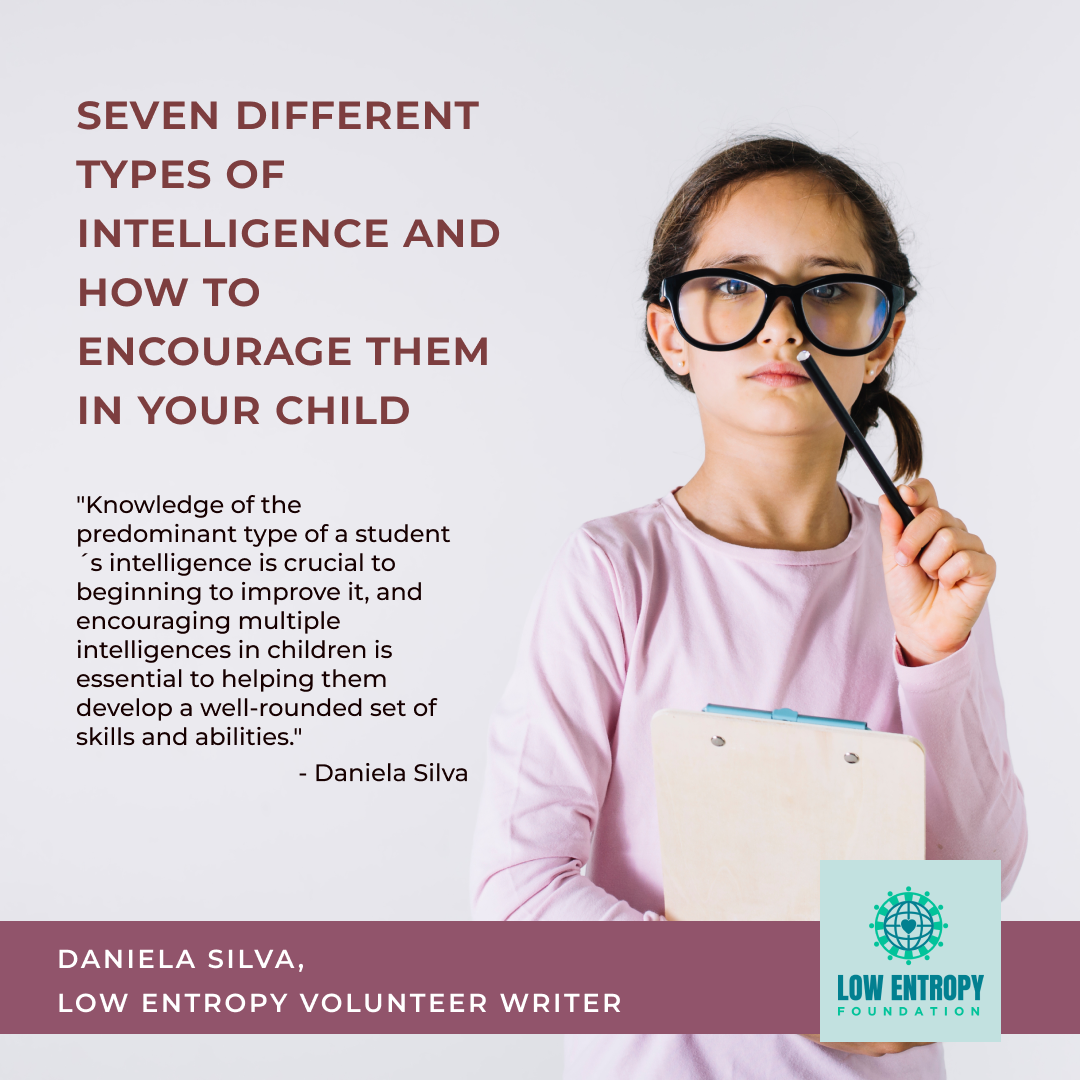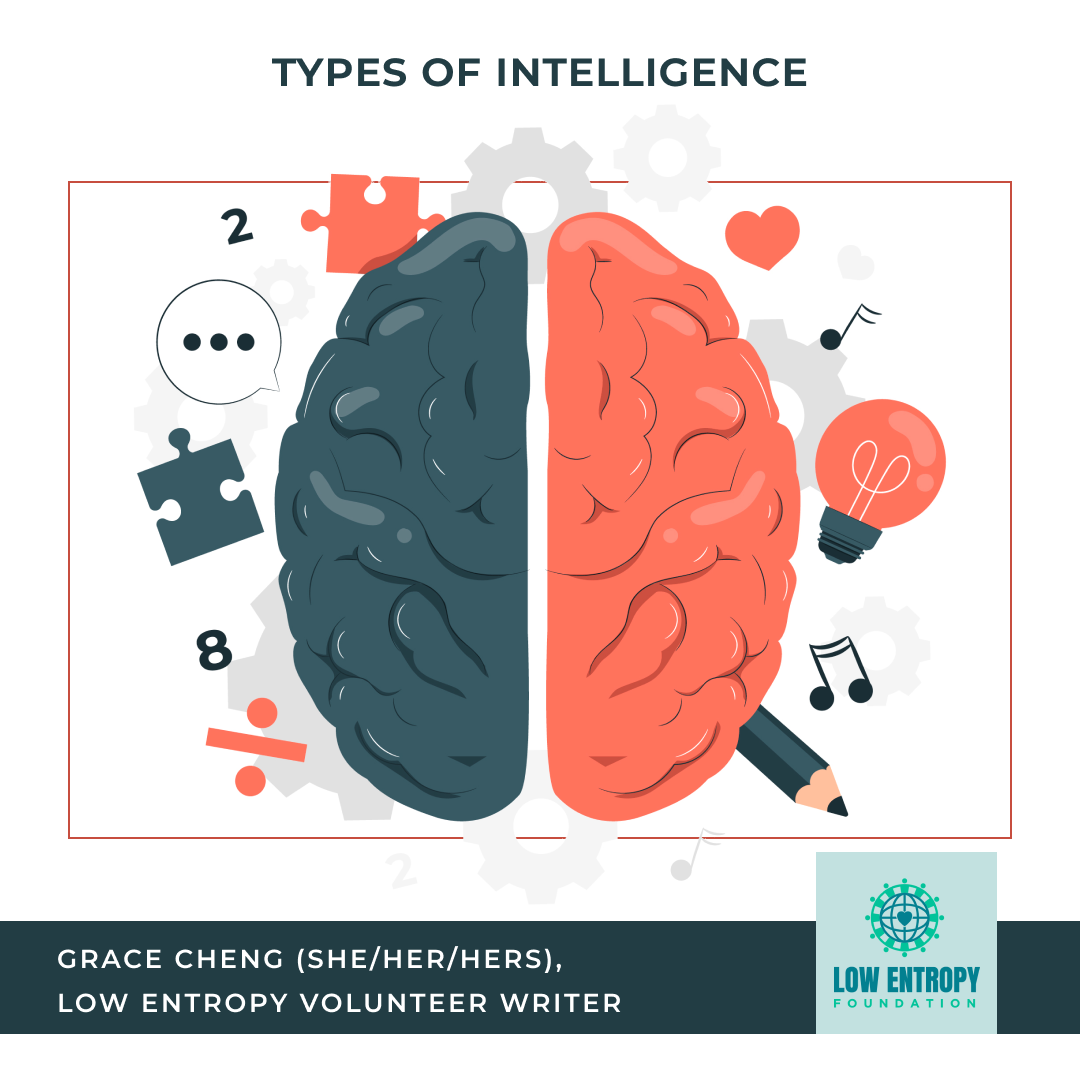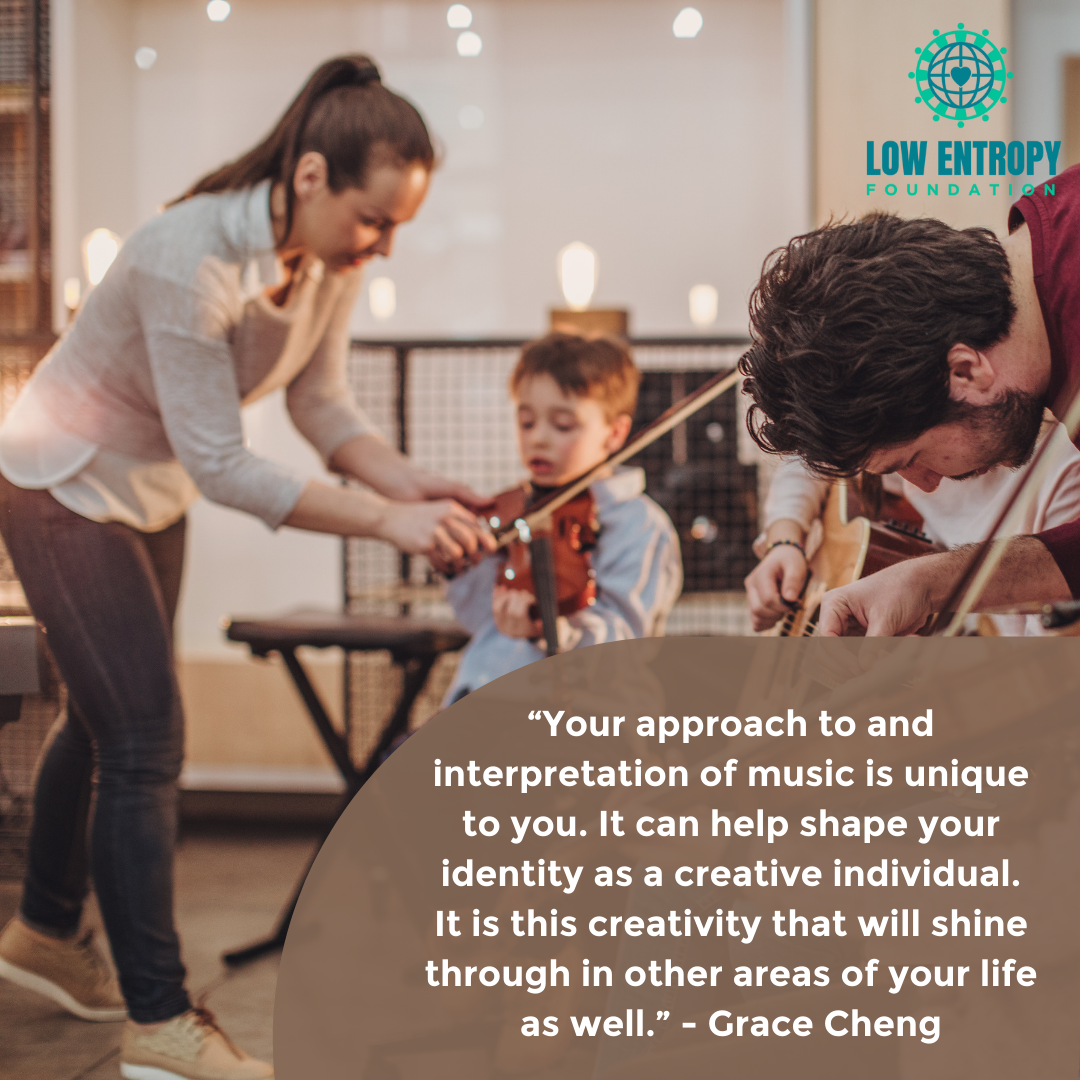Seven Different Types of Intelligence and How to Encourage Them in Your Child
September 22, 2023

Daniela Silva, Low Entropy Volunteer Writer
Human intelligence is a complex and multi-dimensional trait, and researchers have identified various types of intelligence. One of the most widely recognized models of multiple intelligences was proposed by psychologist Howard Gardner in 1983. Gardner’s theory suggests that there are several distinct types of intelligence, each with its own unique characteristics. Here are some of the key types of intelligence:
- Verbal-Linguistic Intelligence: This type of intelligence involves the ability to use language effectively, both in speaking and writing.
- Logical-Mathematical Intelligence: This type of intelligence is related to reasoning, problem solving and understanding abstract concepts.
- Spatial Intelligence: Spatial intelligence refers to the ability to perceive and manipulate visual information.
- Bodily-Kinesthetic Intelligence: This type of intelligence involves using one’s body and physical coordination effectively.
- Musical Intelligence: Musical intelligence is the ability to understand, create and appreciate music.
- Interpersonal Intelligence: Interpersonal intelligence involves understanding and interacting effectively with other people. Individuals with high interpersonal intelligence are often skilled at empathizing, communicating and building relationships with others.
- Intrapersonal Intelligence: This type of intelligence is related to self-awareness and understanding one’s emotions, motivations and inner thoughts.
By transferring the theory of multiple intelligences into the classroom, it is possible to understand why some children have skills and abilities in solving numerical calculations and math expressions and difficulties in other disciplines such as history and geography. Others demonstrate success and ease in performing sports and exercises with the body, while others show dexterity in playing some instruments and composing melodies.
Knowledge of the predominant type of a student´s intelligence is crucial to beginning to improve it, and encouraging multiple intelligences in children is essential to helping them develop a well-rounded set of skills and abilities. Here are some activities to foster multiple intelligences in children:
Verbal-Linguistic Intelligence
Activity: Storytelling
Goal: Expand the child’s verbal expression and vocabulary.
In this activity, the teacher or parents will choose a story and tell it to the child. At the end of the story, the educator will invite the child to retell the tale in their own words, encouraging them to talk about what they thought of the end of the story, what they liked most (and least), and what the child would change in the narrative if they were the author of the story.
Logical-Mathematical Intelligence
Activity: Domino of Reasoning
Goal: Work on the concepts of mental calculation, reasoning, problem solving and decision-making.
Domino pieces are distributed to the child, containing sentences of operations on one side and the respective result on the other. The child needs to unite the mathematical operation of the piece with the calculation on the other side of the piece. For example: in a quadrant there is the calculation 10×2. The child has to unite the piece with its respective result, which is 20.
Musical Intelligence
Activity: Rhythmic Job Slaves
Goal: Develop rhythm skills and timing of movements.
Using the same rhythm and intonation as the Brazilian song “Slaves of Job,” the child is challenged to sing it by replacing the original lyrics of the song with different syllables and vocal sounds as they transfer the object that is in their hand to the other participant’s hand. The objects can be varied: matchboxes, colored pencils, paper balls, etc . . .
Bodily-Kinesthetic Intelligence
Activity: Game of the Senses
Goal: Enhance the sensory abilities of taste and touch.
With a band over the eyes, the child will have to correctly guess the stimuli offered to then, using their taste or tactile skills, according to the stimulus presented. This could be a piece of fruit, tennis balls, candy, foam, etc . . .
Spatial Intelligence
Activity: Cartographic Drawing of the Neighborhood
Goal: Develop visual-spatial capacities and a sense of direction in the child.
Guide the child to observe the path that they make from school to they’re home, and suggest that they draw a cartographic drawing (map) of the path travelled. In this activity, it is possible to include images of the main points covered by the student, such as supermarkets, drugstores, houses or green areas.
Interpersonal and Intrapersonal Intelligence
Activity: Secret Ticket
Goal: Develop the skills of self-awareness, empathy and knowledge about others.
The teacher distributes equal pieces of paper and suggests to the students that they write a sentence containing a striking feature without signing the ticket. Then all the papers are collected and placed inside a box to be scrambled and removed one by one for each child. Participants should read aloud what was written and say the name of the person they believe possesses the trait. Regardless of errors or correctness, the actual author of the ticket presents himself or herself for the class.
Overall, embracing and stimulating multiple intelligences in a child is essential for holistic development, fostering individuality and preparing them to face a diverse and ever-changing world. It promotes a more inclusive and effective education system that values and celebrates each child’s unique abilities.
—
Leave your thoughts for Daniela in the comments below. You can also follow us on Facebook, Instagram, TikTok, Twitter and YouTube to stay up-to-date with Low Entropy news!
GET INVOLVED
At Low Entropy, we believe changing the world starts with changing ourselves.
Founded in 2015, Low Entropy Facilitates conversations that encourage diversity and promote inclusivity.
We understand that life can be confusing at times. It can seem challenging and sometimes you may feel like no one really “gets you.” We offer an opportunity to connect with others who have the capacity to understand you.









